
My stepfather owned an orange orchard near the foothills of the western Sierra. He was an advocate of the puritanical work ethic. [Illustration] Michael McMillan
Loose rock! Dangerous steep chutes at almost 14,000 feet–but what do the naive upstarts know? The story depicted in these cartoons, one likely familiar to so many aspirant mountain climbers, really happened. I took some expressionistic liberties here as far as an exact profile and name of the mountain in question, but the essence of the experience remains accurate as far as I can remember.
The originals are woodcut block prints. I use laminated cherry oil-based inks and do my own cutting and printing. A contributor to many “underground comix” in the 1970s, I sidestepped from my industrial design and fine arts backgrounds into the “bottom feeder” world of cartooning and animated films. For a while I taught drawing and printmaking, then eventually bought my own press and started full-scale production of multi-colored block prints. I prefer the hands-on labor intensity to the passivity of sitting in front of a computer.
My print “stories” generally involve subjects other than climbing, but this one has been on my mind for a very long time. It had to be done. From the beginnings shown here, I went to school in southern California and connected with the Sierra Club Rock Climbing Section. (And yes, the legendary names were on the scene.) I became a proficient piton pounder. Mountains, crags and boulders became an important feature of my life on a regular basis. My obsession took a dip in the 70s, but by the late 1980s, at the age of fifty-five, I began lifting weights and re-entered the picture as a boulderer and a rope-solo advocate. This reached a finale in 2003, when I re-broke my leg falling off a highball. Now it’s the printing press and memory lane.
–Michael McMillan, San Francisco, 2007
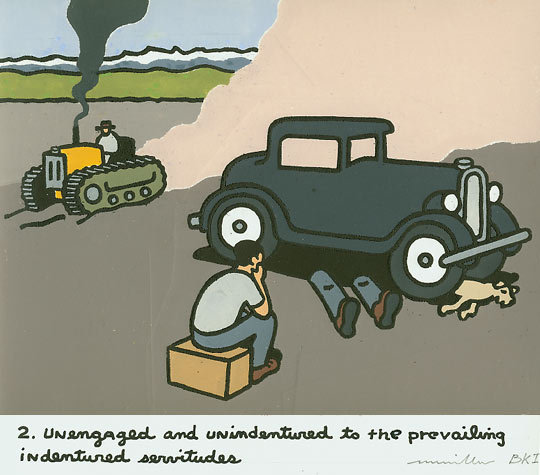
My pals were all involved with their family farms or slaving away in fruit packing houses to support their cars or girlfriends. [Illustration] Michael McMillan
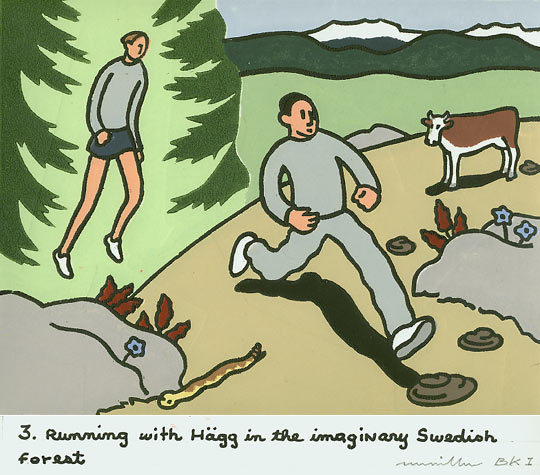
In high school track was my only sport. I often trained in the foothills emulating my role model Gundar Hagg, who held the mile and 5000-meter records at the time. Nobody just ran in those days. [Illustration] Michael McMillan
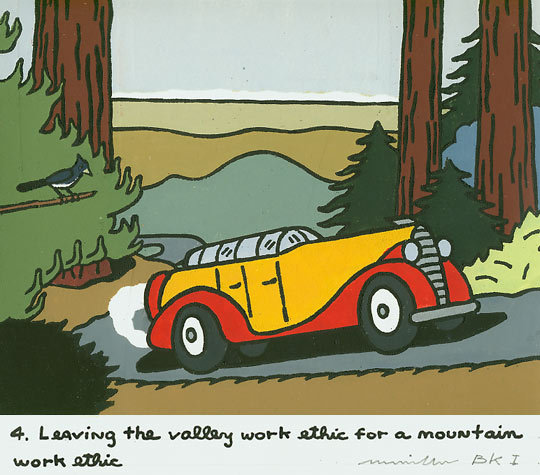
Saved from the flatlands by finagling a job for the summer at the Giant Forest Concession in Sequoia National Park. [Illustration] Michael McMillan
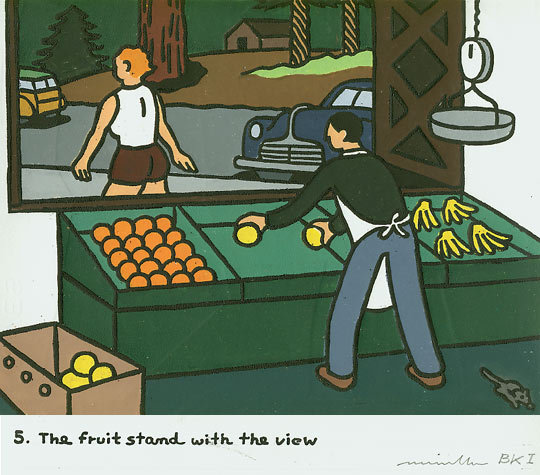
Assigned to be in charge of the fruit stand at the Market. [Illustration] Michael McMillan
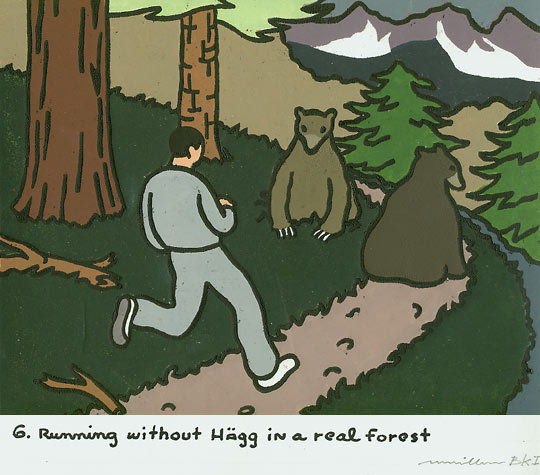
Continued with running in the evenings after work. [Illustration] Michael McMillan
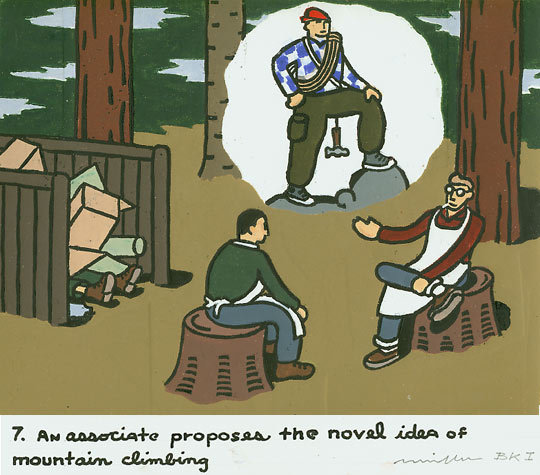
At the Market I became friends with Allen, who worked at the meat counter. He was from Florida and came west to climb mountains. The guy in the rubbish bin was a four-season employee sleeping one off. [Illustration] Michael McMillan
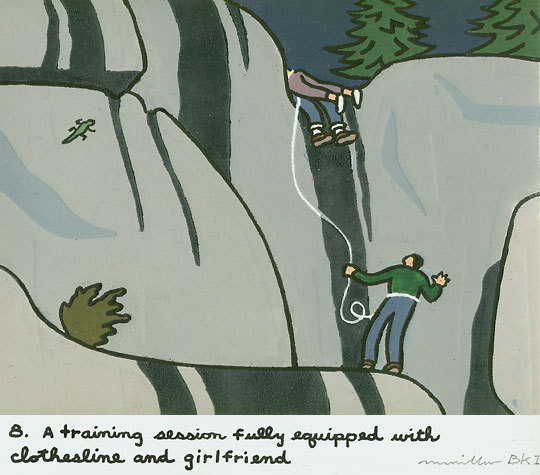
We actually bought ourselves a clothesline and made regular visits to a nearby slab. Allen enlisted girlfriends who rarely lasted more than one session. [Illustration] Michael McMillan
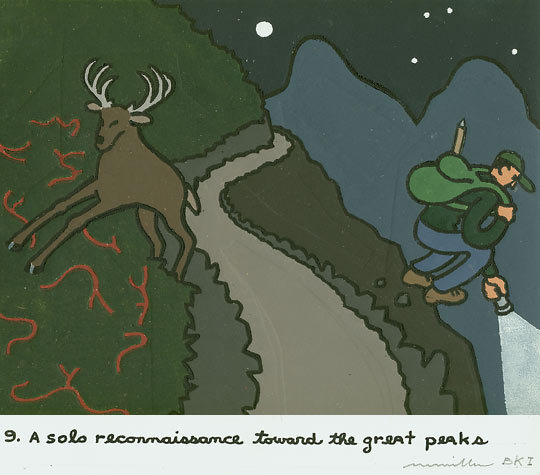
A night before my day off I was determined to get to the real Sierra. Hiking at night with a dimming flash led to an almost-collision with a panicky mule deer. [Illustration] Michael McMillan
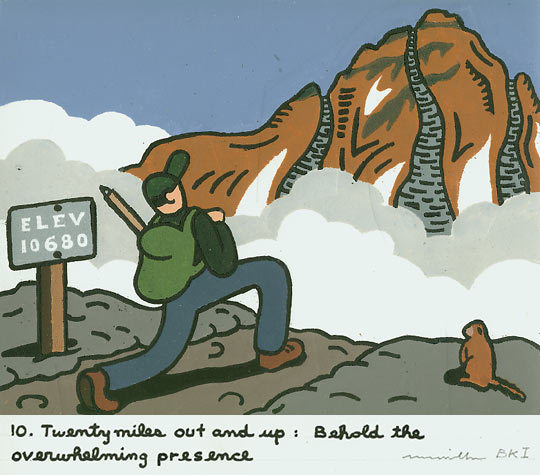
The next day I reached a pass called Kaweah Gap and there was the peak I had selected from a topo map: Black Kaweah (13,680′). [Illustration] Michael McMillan
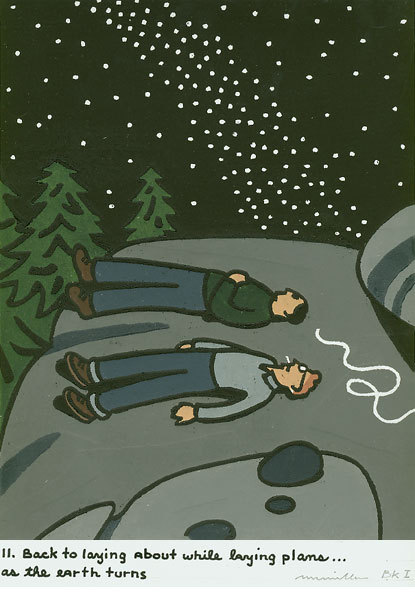
During the next few weeks Allen and I planned our assault–a stretch with only one day off, but a “piece of cake” from Kaweah Gap. [Illustration] Michael McMillan
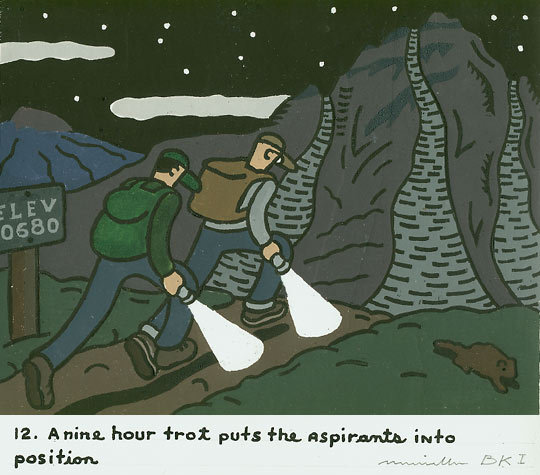
Toward the end of summer we were in superb condition. We arrived at the base of the peak at 2 a.m. [Illustration] Michael McMillan

At daybreak we put on our boots, scraped up some oatmeal and began climbing. [Illustration] Michael McMillan
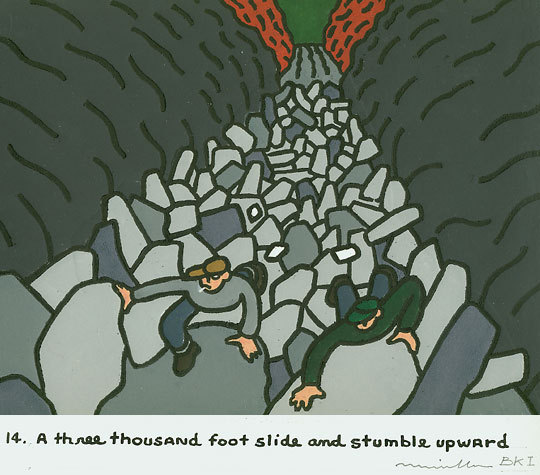
The talus slopes on the western spur of Black Kaweah are interminable. [Illustration] Michael McMillan
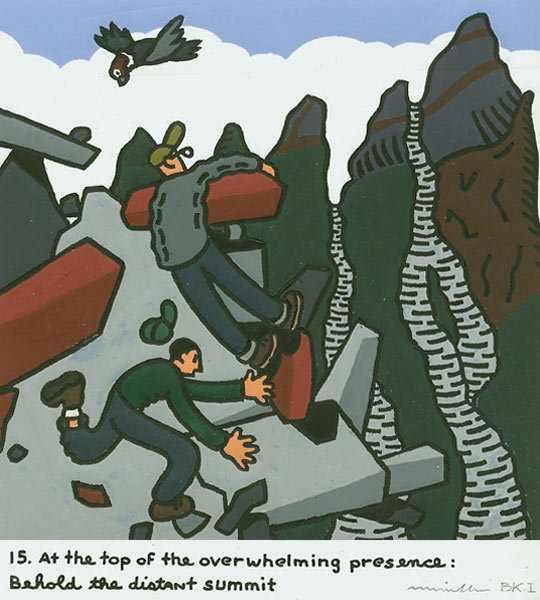
And here is the surprise the mountain held for these young upstarts. The “summit” visible from Kaweah Gap was not the summit at all! Innumerable towers and steep chutes of unstable rock were the name of the game here. It was turnaround time at 2 p.m. After all… we had to show up at the Market by 7 a.m. the next morning. [Illustration] Michael McMillan